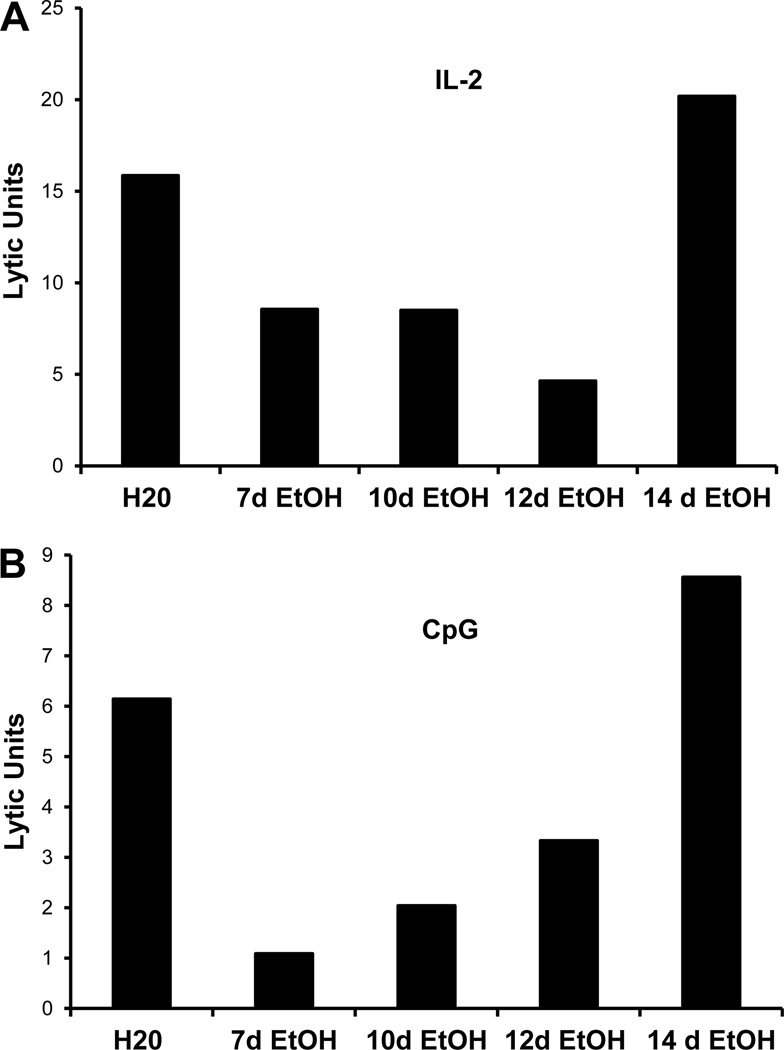Figure 2.
Decreased lytic activity is short-lived in ethanol-consuming mice. C57BL/6 mice were acclimated to ethanol for 1 week and maintained on 20% ethanol for the indicated number of days. Splenic NK lytic activity was determined by chromium release assay after overnight culture with 200 units/ml IL-2 (A) or 10 micrograms/ml CpG A (B) using the NK sensitive cell line YAC-1. For these experiments, splenocytes from the mice at each time point were pooled together hence no error bars are presented. The design of the experiment was such that all time points were assayed for lytic activity on the same day and with the same reagents. Lytic activity was decreased in ethanol-consuming groups relative to water controls through 12 days of consumption of 20% ethanol after which it returns to levels comparable to water controls. The data shown represent lytic units per 1 × 106 effector cells.

